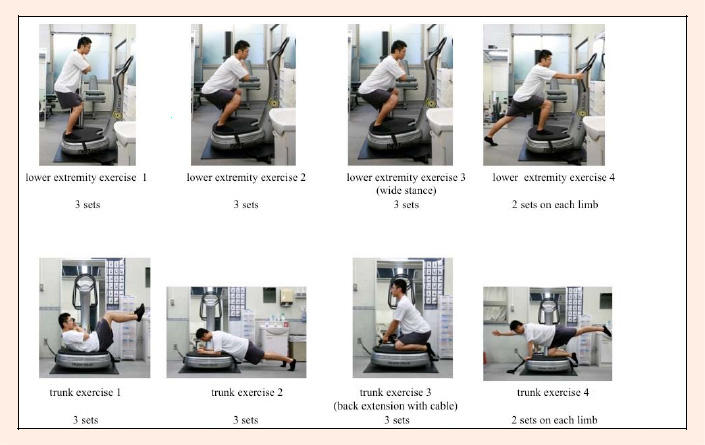
Figure 1. The 8 body-weight exercises of the 12-week training program used in the present study. The top images show the four lower extremity exercises, while the bottom images show the four trunk exercises. The lower extremity and trunk exercises were performed twice weekly for 30 sec/set on the WBV platform with intermittent rest periods of 60 sec. Each exercise was performed for 3 sets, except for lower extremity exercise 4 and trunk exercise 4, which were performed for 2 sets on each limb. In static exercises, the knee and hip joints were in the following positions during the four lower-body exercises: exercise 1, knee angle, 60 degrees knee extension (full extension = 0 degree), and hip angle, 60 degrees hip joint flexion (static position); exercise 2, knee angle, 90 degrees knee extension, and hip angle, 90 degrees hip joint flexion; exercise 3, knee angle, 90 degrees knee flexion, and hip angle, 90 degrees hip joint flexion; and exercise 4, knee angle, 90 degrees knee extension (static position). Only trunk exercise 2 was performed statically throughout the trial. During the dynamic exercises, participants went to the static position, and then returned to the relaxed position. During trunk exercise 3, participants were instructed to lean their upper body backward with their arms straight, and investigators often touched participants’ lower back muscles to ascertain the muscles were contracted properly. In dynamic exercises, participants moved their upper body forward to backward
